Technology Report

한눈에 보기
- Easy access to large language models has unleashed a torrent of experimentation in the software industry: Nearly 9 out of 10 developers are already using artificial intelligence (AI) in their products.
- Software vendors expect a step change in functionality, and those that move too slowly could lose competitive advantage.
- The rise of AI also poses some risks for software companies—for instance, AI tools could make it easier for customers to develop their own software instead of buying it.
- If AI reduces the number of roles in some job categories, software vendors that price on a per-seat basis may need to adjust their business models.
This article is part of Bain's 2023 Technology Report.
Over the past six months, nearly every software company has announced plans to apply generative artificial intelligence (AI) within their business. The ease of access to large language model (LLM) application programming interfaces (APIs) has made it relatively easy to demonstrate new AI-powered products. Bain’s recent survey found that 89% of software companies are building AI into their products to differentiate them—15 percentage points higher than other sectors.
Innovation is happening quickly, and we’re still in early days. Three out of four software companies surveyed believe that early movers will have a sustained advantage that will not level off. Software leaders expect the technology to generate significant opportunities to increase top-line growth and customer retention (see Figure 1). All that can be certain is those that fail to start the journey will be left behind.
Software companies see benefits from new artificial intelligence products, features, and interfaces
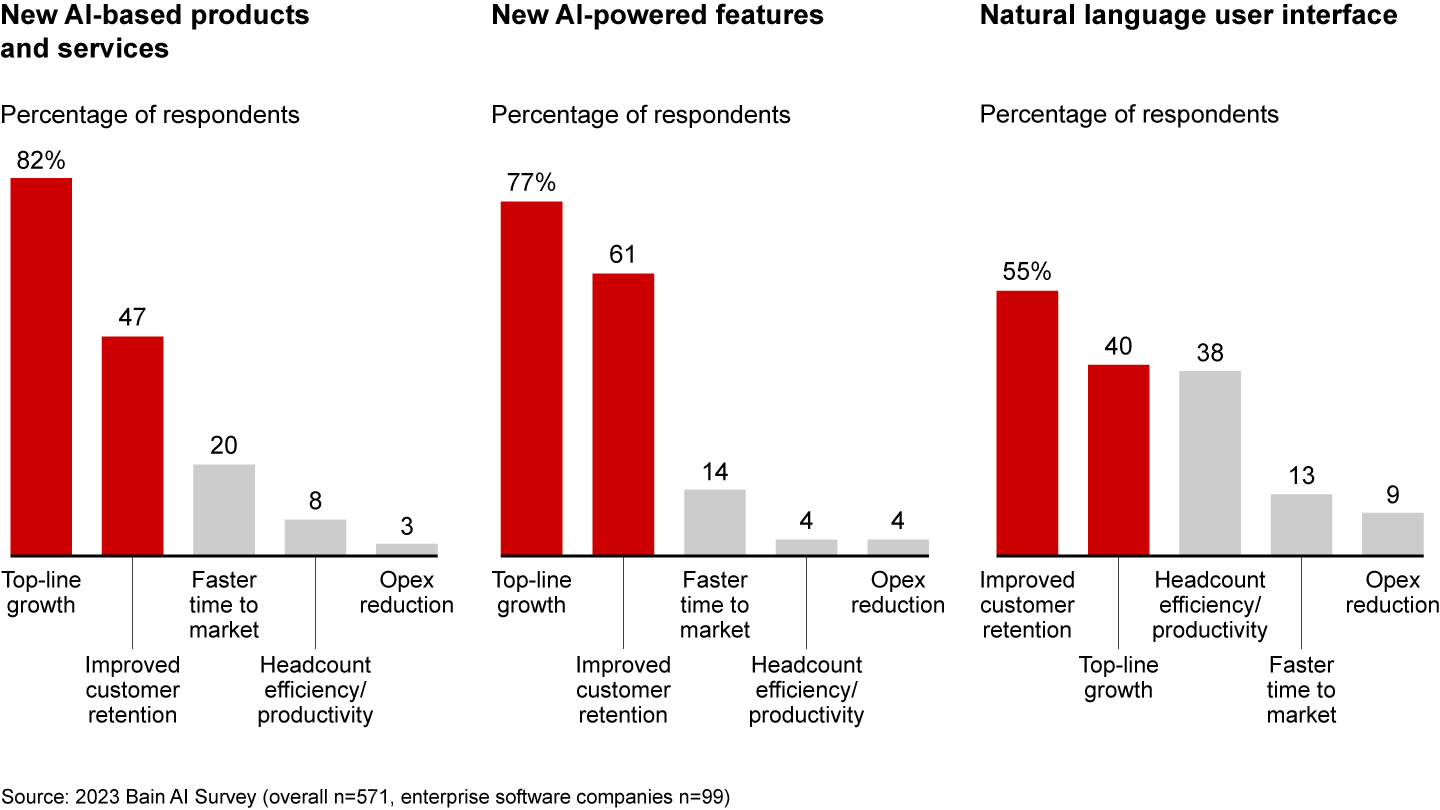
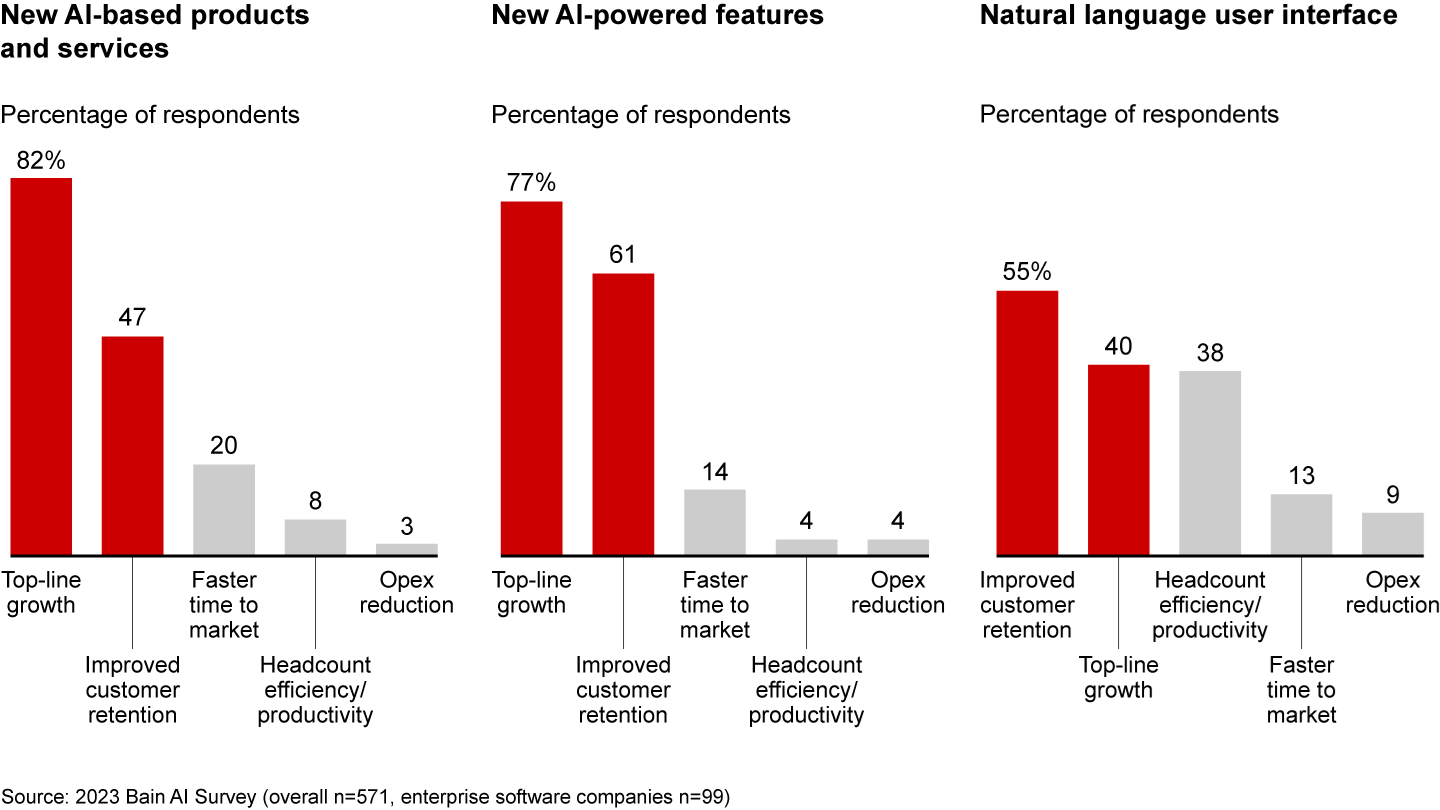
Opportunities and risks
Software companies also need to address how the adoption of generative AI by their customers and competitors can threaten their core business. Some software categories may face an existential threat as AI fundamentally changes the capabilities and economics of what can be done in areas such as low- or no-code application development and customer experience management. Most application categories will experience a step change in functionality and user experience, so vendors should prioritize their AI roadmaps to deliver their own capabilities where they will count the most.
As customers introduce AI into their own processes, job roles will change. This could lead to a dramatic fall in the number of end users, which would hurt segments that rely on seat-based pricing, such as service desks, engineering development, marketing and project management, and others (see Figure 2). Seat-license software companies can respond by ensuring that the product still adds value as customers reengineer their processes; they can also adopt an alternative, consumption-based pricing model (for more, read the Bain Brief “Is Consumption-Based Pricing Right for Your Software?”).
Generative artificial intelligence will have a greater effect on software categories that rely on seat-based pricing models
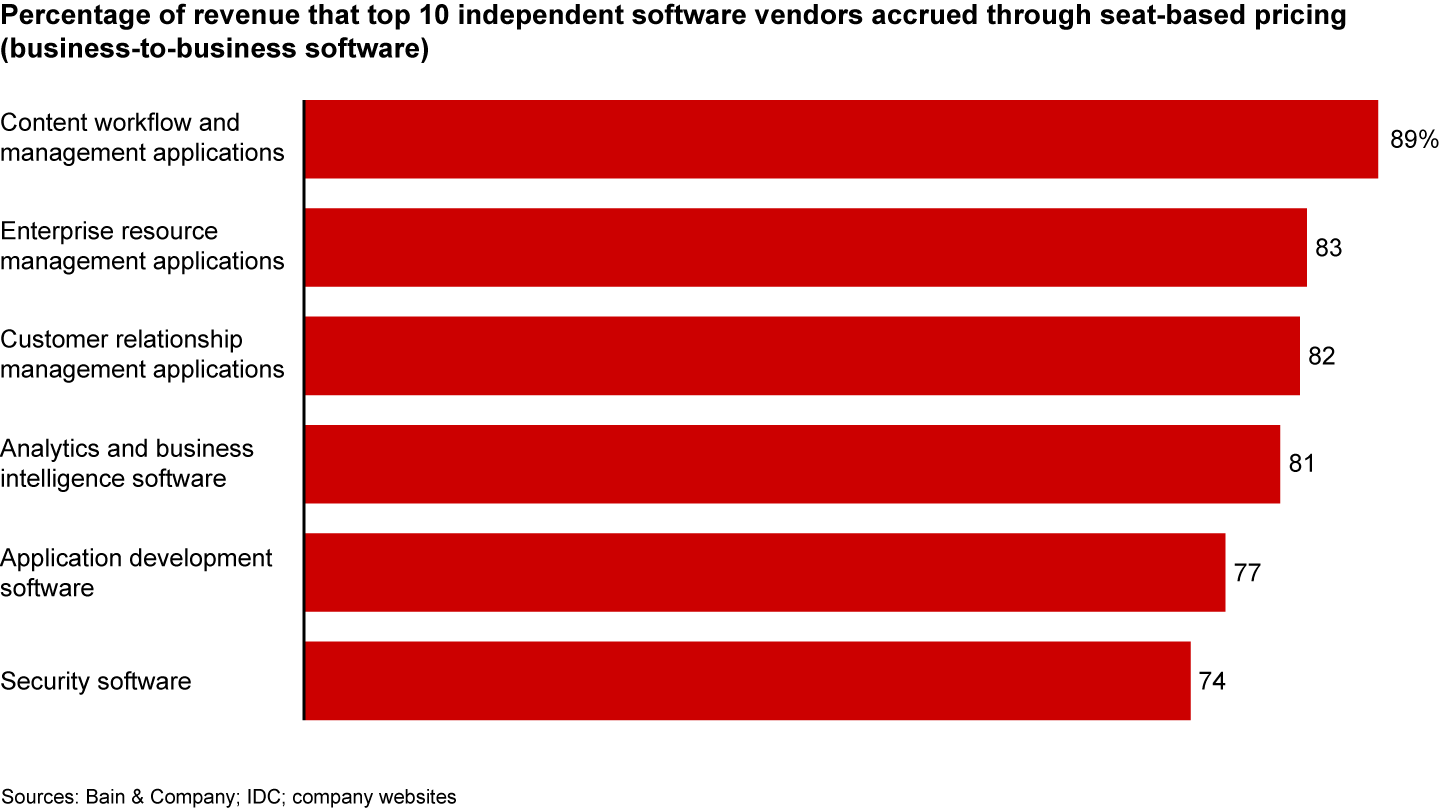
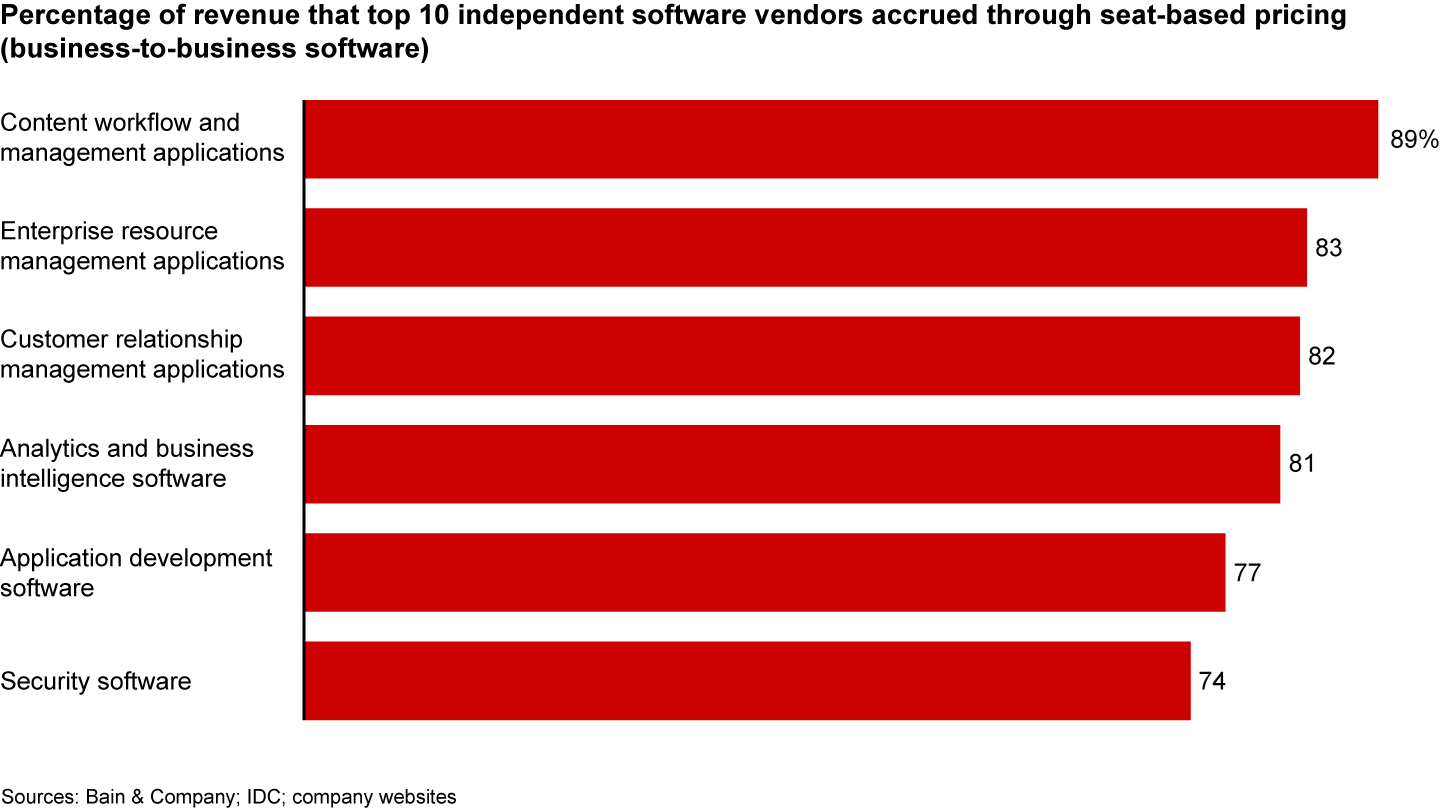
Developing an understanding of how customers are adopting AI and reengineering their processes can help identify other risks and opportunities. Nearly 40% of the companies we surveyed said that they are either evaluating or adopting foundation models or generative AI into their work. Most activity is in software development, knowledge work, and content creation aimed at helping companies synthesize data, create content, or assist in reasoning and planning. Rather than simply automating discrete roles (for example, an AI-powered chatbot), we’re seeing a complete reimagining of workflows and job roles. For example, AI could help a product manager create marketing content, thereby reducing the need for some downstream roles in product marketing and content authoring.
In the past, vertical software vendors focused on particular industries and relied on process expertise to maintain a competitive advantage. That edge could become harder to maintain as horizontal software vendors are able to use LLMs to interpret industry knowledge and develop industry features at low cost, using their scale and scope to beat niche players.
AI and product strategy
As software companies think about how AI will change their business, they should consider several important questions.
- How will generative AI change the customers’ businesses, and what does that mean for the software product and business model? Automating process steps is simple, but how will customers radically reimagine their workflows?
- Will our AI-powered solutions be differentiated by a proprietary LLM? Or will we differentiate through the integration with other systems and data?
- How will improvements in R&D productivity affect the speed of innovation?
- Will LLMs and generative AI enable a new level of customization for users, reversing the trend toward standardization? Will users still interact with our application, or will it be intermediated by a new chat-based user interface?
These choices will help identify where differentiation will matter most, how to construct the user interface, and how to package and price products. LLM investment barriers to entry are dropping rapidly, and the open-source community continues to innovate in kind. Options to partner or build are expanding, and some customers might have preferences for or against models hosted by particular cloud service providers.
Some use cases are better served with narrower models rather than general foundation models such as GPT4. For example, Intuit is rolling out a generative AI operating system on which its next generation of applications will be built. The OS would be based on a narrow LLM targeting tax, accounting, cash, and personal finance tasks.
Although companies such as Salesforce and ServiceNow use LLMs from third-party vendors, they are also building their own LLMs. As expected, propensity to build and train an LLM increases with company size (see Figure 3).
Larger companies are more likely than smaller ones to build their own large language models, but even they are more likely to buy
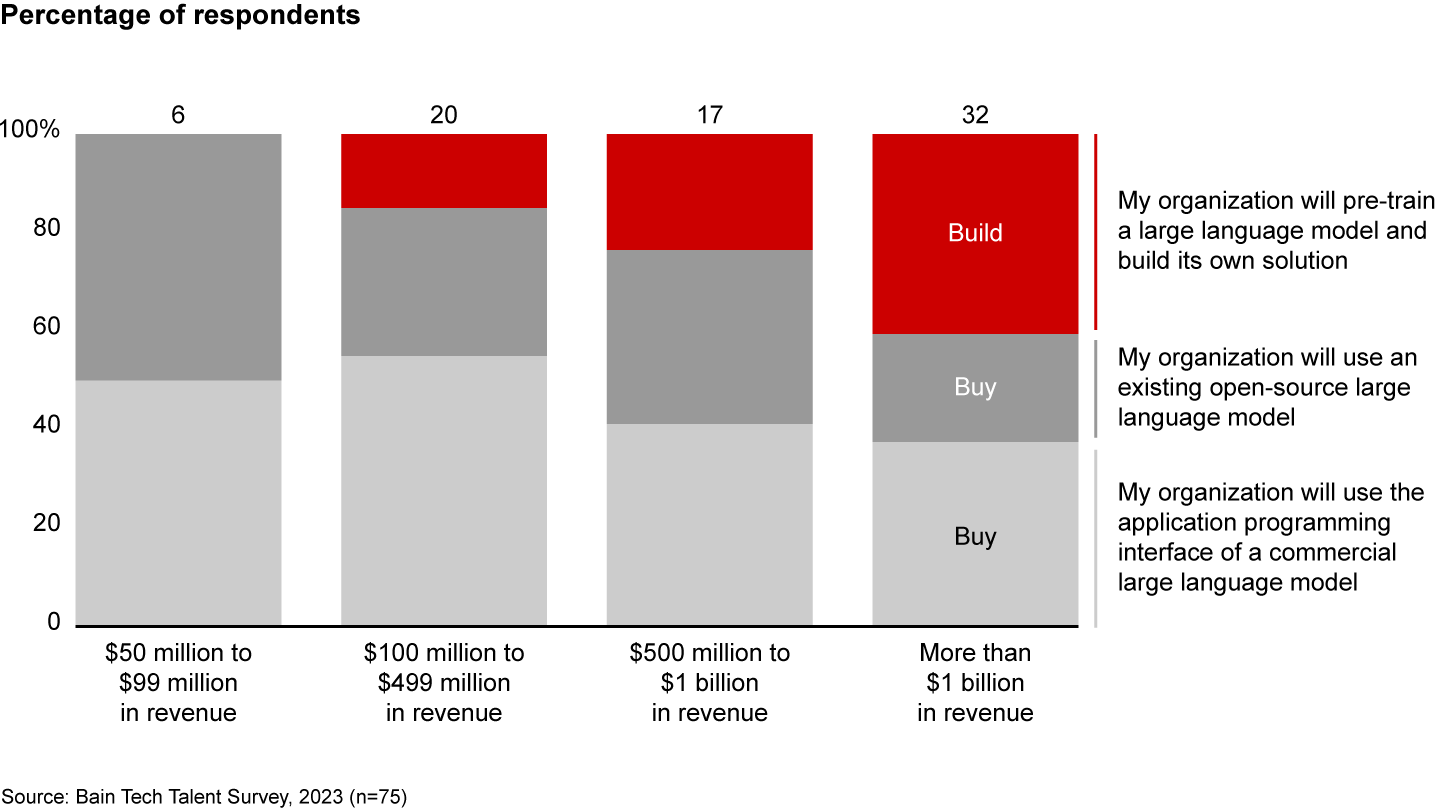
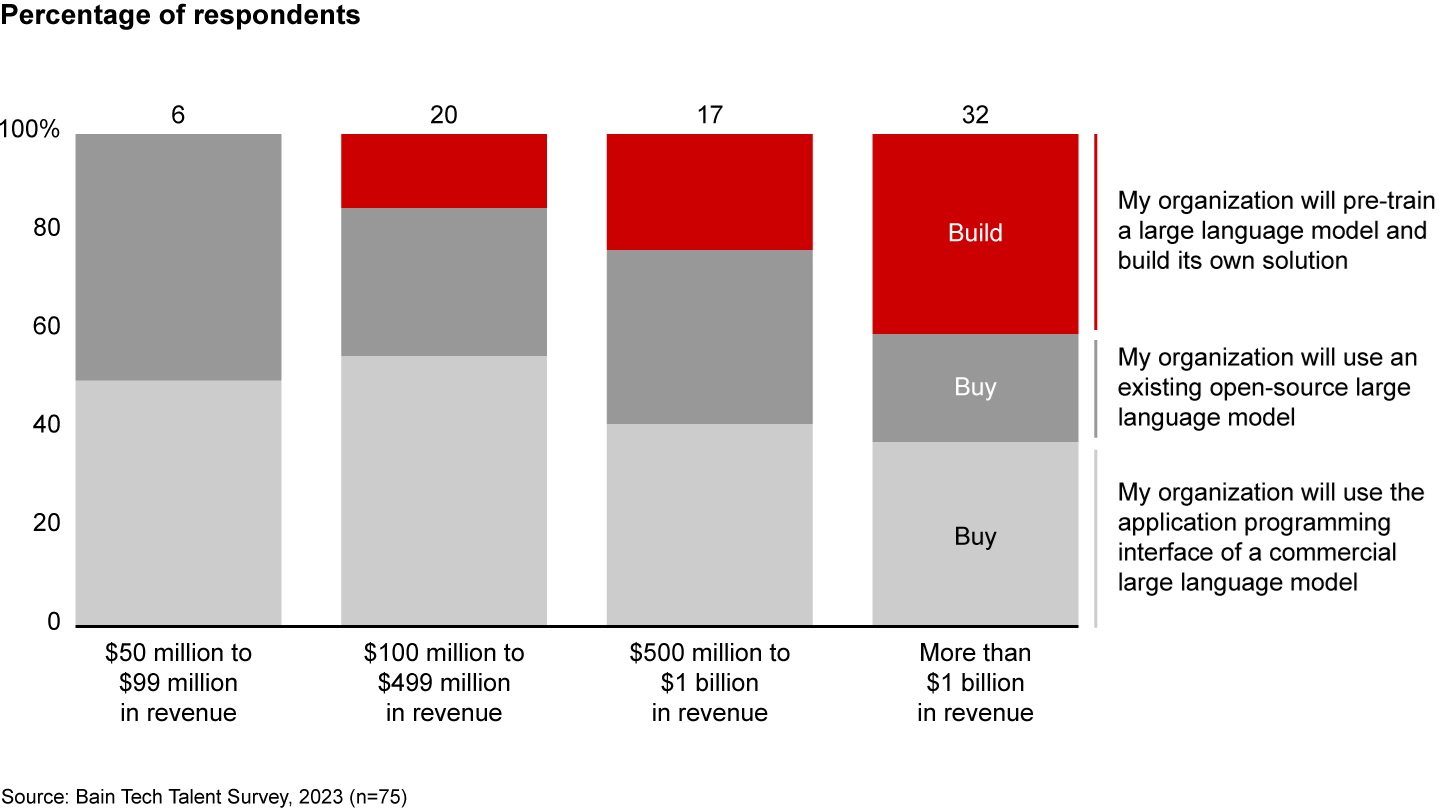
Many customer concerns around data protection and access, personally identifiable information, audit trails, prompt grounding with proprietary data, and integration with other machine learning and automation technologies are served in platform layers, beyond the LLM. It’s here that many software companies can differentiate themselves, leveraging established positions in customer architectures. For example, Salesforce is investing in its LLM Gateway architecture while accessing GPT4 and other LLMs through APIs, where they also have MuleSoft API management capabilities.
Generative AI will transform the way users interact with software. They no longer will have to interact through traditional user interfaces, and they can now do so with natural language via a chatbot. Software makers’ decisions about whether this is a simpler user interface for existing applications, a new user portal for all process interactions, or an established general purpose text interface (such as Slack or Teams) can shift to where the control point sits.
Software makers also have to decide how to package and price new AI functionality. Whether it’s a separate product, an add-on, or just embedded as an enhancement of the existing product, independent software vendors could monetize it with a price increase, or they might choose to treat this as continued innovation that pays for itself by retaining customers. But beware the gross margin impact of running computing-intensive features.
Generative AI is already having a huge impact on the software industry, offering both opportunities and threats to the established order. Software vendors must embrace the opportunities and not shy away from reinventing themselves to remain relevant and capitalize on this new technological development. Doing so requires understanding how customers will reengineer themselves around existing applications, and that will help software makers decide how to architect and differentiate new AI solutions.